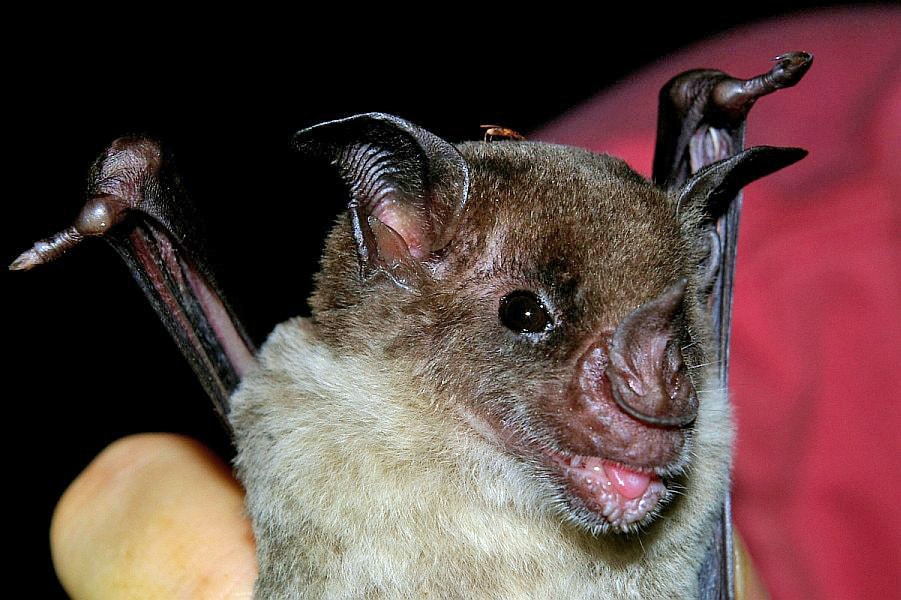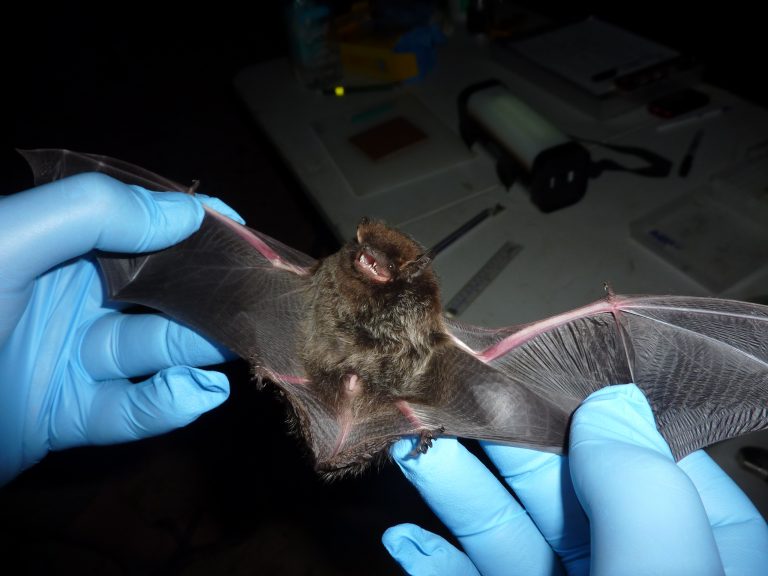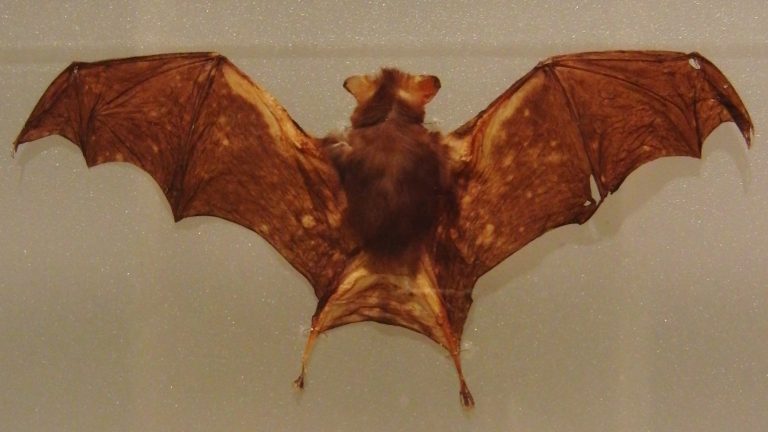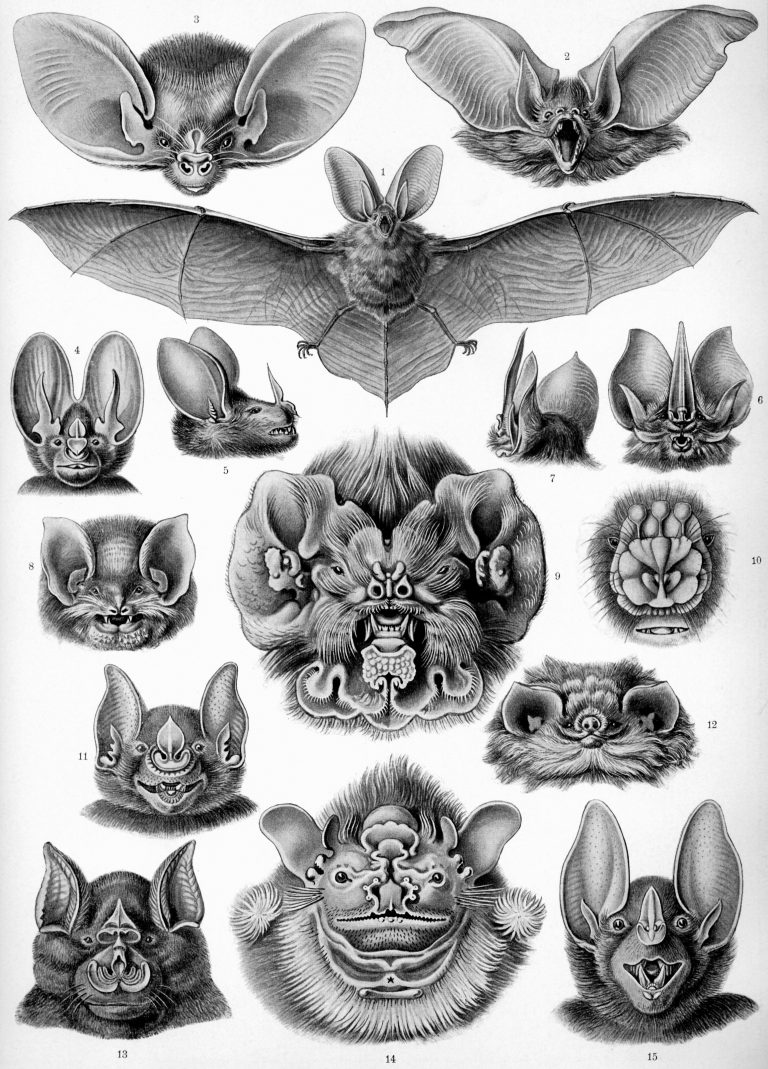Fun Bat Facts
- Many people have misconceptions about bats. In this article we will explore some of those and find out how amazing facts on bats really are.
- The first misconception is that bats are related to the rodent family and that they are basically “flying mice”. This is simply not true; in fact, bats are a group all their own named ‘Chiroptera’, which means hand-wing. Bats are closer to groups like primates and lemurs versus the rodents.
- The next fact about bats that people are often wrong about is they think bats are blind. The old saying goes ‘as blind as a bat’ but in fact, many bats actually have very good vision. They can see almost as well as us and while their sight is definitely better in the darkness, they can still see pretty well. Some bats even see in color! But to see in the dark, like inside a cave, bats use “Echolocation”. These are very high frequency vocalizations similar to radar that the bat emits as it flies.
- Not all bats are vampire bats, though we hear about those most. While many people believe that bats are vampires by nature, out of the 900 species of bats, there are only three vampire bats in the entire world. These three bat species generally stick to Latin America and they do not usually get their blood meal from humans. The remaining species of bats that are all over the world feed off of fruit, nectar, pollen and insects. There are so many types of bats that they make up 1/5 of the world’s mammals!
- Bats usually only have one live young per year? Their slow reproduction makes them vulnerable to extinction. They also, just like us, feed their young by pectoral breasts until they are old enough to get food for themselves. The average life-span of a bat is similar to ours as well, as they can live up to forty or fifty years old. The majority of bats could fit in the palm of your hand!
- A lot of people have no idea that bats do not like the cold weather. As soon as the weather changes, a lot of bats will migrate to South America and while there are some bats that will simply hibernate until the weather breaks, many bat species migrate and will fly over a thousand miles in order to get to places that are warm.
- The places that you will mainly find a lot of bat species are in some of the warmest parts of the world. The tropics are fantastic places for bats to live, not only do that have a lot of insects and flowers for their food source, but they are also the perfect climate for these furry little creatures. Mexico, Hawaii and even California are just a few of the places that many bats can be found.
- A great bat fact is one that makes gardeners and homeowners love them: a single bat can eat up to 600 mosquitoes in just 1 hour! Almost 40% of American bat species are having a severe decline in populations, for reasons including habitat loss. Providing bats a bat house can help build the populations back up of many bat types that eat crop-damaging insects. Bat houses provide places for bats to roost, hibernate and raise young, and help make up for the dwindling number of natural sites available to them due to human development of their usual habitats.
Mammals or Birds
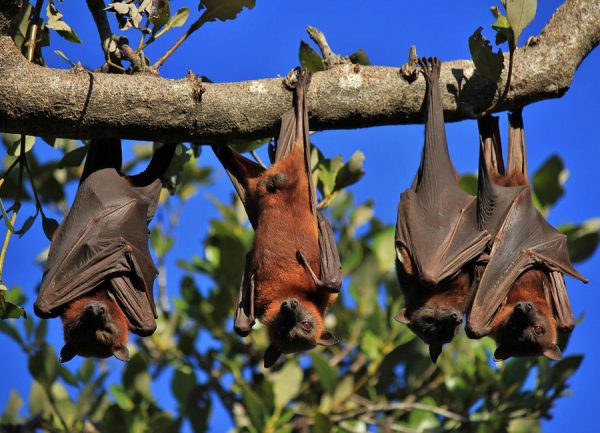
Some More Interesting Facts About Bats
- Bat caves: Bats sleep or Roost in caves during the day, hanging upside down with their claws, gripping the cave walls, buildings and trees; this is roosting.
- Bats in flight: A bat has powerful chest muscles, which it uses to flap its wings. It steers by moving the bones in its fingers and legs to change the wing’s shape.
- Bat Wings: The bones in the bats’ fingers are long and covered by a thin layer of skin stretching between each finger. That forms the top of the wing and ends in a claw. Their thumbs stick out like small claws to grip branches.
- Bat senses: Most bats hunt at night, when it is too dark to see. Instead of using their eyes, some bats use sounds and echoes to detect objects, which process they refer to as echolocation.
- Bat’s ears: Most bats have large ears which give them excellent hearing. They use their ears to collect sounds in the dark and to help them locate their prey.
- Listening in the dark: Echolocation is the use of sounds and echoes to find objects. Bats make very high-pitched sounds. These sounds hit an object and an echo comes back. A bat can tell where this object is and how big it is, by listening to the echo.
- Catching insects: Bats are very good at catching insects in midair in the dark!. They find them by making clicking noises and waiting for the echoes to bounce off the insects.
- Echolocation: A bat’s squeaks and clicks are mostly ultrasonic, too high for our ears to detect. The sounds reflect from the object nearby and the bat works out whether the echoes indicate avoidable leaves and twigs when flying in search of prey. This system, called echolocation, allows the bat to fly and feed even in total darkness.
- Bat Diet: Most bats eat insects; others use their long tongues to eat fruit and sip nectar from flowers.
- Bat droppings: Bats live in huge numbers and form big colonies. The dropping when heaped up creates a home for small creatures, thus forming a new ecosystem. Their droppings find use in the soap manufacturing industry.
- Bat babies: Some bats bring their babies up together in a huge nursery, often filled with thousands of bats. Amazingly, the mother can always find her baby when she returns with food.
- Bat Features: Bats have a variety of head shapes that reflect their feeding habits: Fruit bat – has a long snout and a long tongue to sip nectar and eat fruits. Long eared bat – This bat has large ears that can hear insects’ wings flapping. Long nosed bats – These bats have long noses to help them smell the flowers.
- Fruit bats: Fruit bats live in the forests of Africa, Australia and Asia. Some fruit bats have extra long tongues that they use to suck nectar out of flowers. They sometimes call fruit bats as Flying Foxes. Some fruit bats have wings that measure almost 6 feet. Fruit bats gather in large groups high in the branches of rainforest trees in what they refer to as Camps. Fruit bats do not use echolocation, Instead they have large eyes that they use to find fruit in the rain forest. They also use their noses to smell their food.
- Vampire Bats: Vampire bats are bloodsucking bats. They feed on the blood of cow, pigs, horses and birds. They detect their prey at night using special heat sensors in their faces. They cut the skin of their prey and lap up the blood. The saliva of vampire bats numbs the skin of the victims so they cannot feel the blood sucking bite. Vampire bats can drink about one and a half times their body weight of blood in one feed. They need to eat at least two tablespoons of blood each day.
Bat Enthusiasts!
Some Amazing Truths and Stories About Bats That You May Not Know
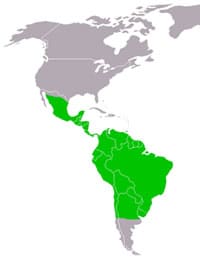
Scientists estimate that the bats first made their appearance around 60 to 100 million years back. They have proof that the megabytes first appeared about 35 million years back in history. With a population of around 20 million bats, their colony in the Texas caves of Bracken Bat, is the largest known colony of bats in the world.
The researchers found the short-nosed fruit bat female indulging in oral sex to prolong the extreme pleasure of copulation.
Did you know that the giant golden-crowned flying fox, a fruit bat, is the largest living species of bats with a wingspan of five to six feet or 1.5 to 1.8 meters?
Did you know that the free tailed bats of Mexican origin can cover distances of around 250 miles or 400 kilometers in a single night at altitudes of about 3050 meters or 10,000 feet, flying at unimaginable speeds of 60 miles per hour or 97 km/ Hr?
Coming to the interesting story of the bloodsucking Count Dracula, he supposedly lived in Bavaria in Eastern Europe, while the vampire bats are exclusive inhabitants of only South and Central America. Moreover, vampire bats only lap up the blood from the wounds of their prey, but do not suck as the stories make out. Today, the anti-coagulation agents in the vampire bat saliva has been channeled to treat humans with stroke or heart related problems.
In a lighter vein, there is a fable that originated from Aesop in 600 BC, that recounts why bats come out only during the night. It seems a bat borrowed funds for a business that failed. Fearing the moneylenders, it stopped coming out during daytime for fear of being apprehended, and started coming out only at night to avoid detection.
Thirdly, bats being associated with the devil and all that is nothing but rubbish…they are just one of the most beautiful and intriguing and by and far, the most misunderstood animals that belong to planet Earth. So what are bats?

Having discovered a fondness for insects while pursuing her degree in Biology, Randi Jones was quite bugged to know that people usually dismissed these little creatures as “creepy-crawlies”.

